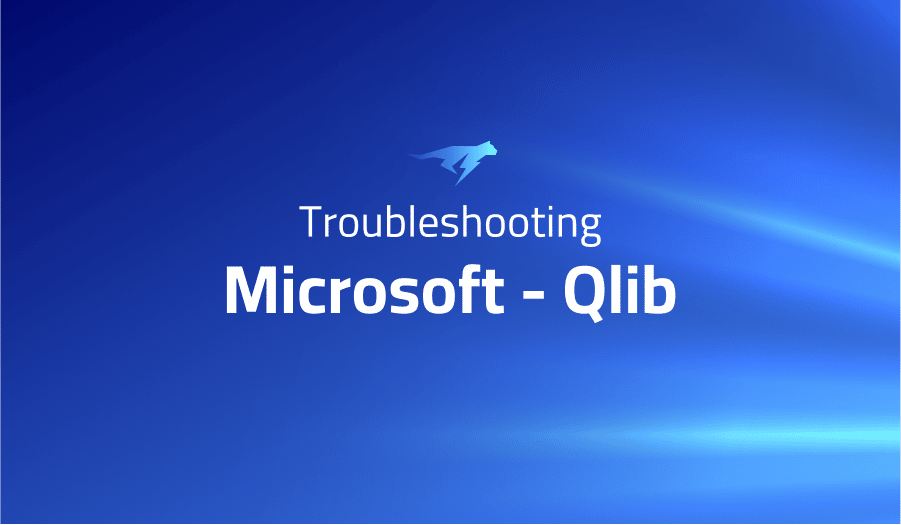

Troubleshooting Common Issues in Microsoft – Qlib
Project Description
Microsoft Qlib is an AI-oriented quantitative investment platform that is designed to help users take advantage of AI technologies to improve their quantitative investment strategies. The platform is likely to provide a range of tools and resources, including machine learning models and other AI-based algorithms, that users can use to analyze and forecast financial markets. The goal of Qlib is to empower users to create better investment strategies by utilizing the latest advances in AI research.
One of the key features of Qlib is its ability to help users easily test their ideas and create better strategies. The platform provides users with an intuitive interface that makes it easy to experiment with different AI-based models and algorithms. This allows users to quickly and easily evaluate the performance of different strategies and make adjustments as needed.
In addition, Qlib is also a platform that hosts the latest state-of-the-art quantitative research papers, allowing user to have access to the most recent research in the field and stay updated with the latest trends. This can be a valuable resource for users who want to stay up-to-date on the latest developments in AI research and learn from the work of leading experts in the field.
Troubleshooting Microsoft – Qlib with the Lightrun Developer Observability Platform
Lightrun is a Developer Observability Platform, allowing developers to add telemetry to live applications in real-time, on-demand, and right from the IDE.
- Instantly add logs to, set metrics in, and take snapshots of live applications
- Insights delivered straight to your IDE or CLI
- Works where you do: dev, QA, staging, CI/CD, and production
The most common issues for Microsoft – Qlib are:
TypeError: can’t pickle _thread.RLock objects
A TypeError message “can’t pickle _thread.RLock objects” is typically encountered when trying to pickle an object that is not pickle-able. In python, pickling is the process of converting an object’s state to a byte stream, and unpickling is the process of recreating the object from the byte stream. Some types of objects cannot be pickled, such as threading.RLock, which is a type of lock used to synchronize access to shared resources in a multithreading environment.
In the context of the error message “Microsoft – Qlib TypeError: can’t pickle _thread.RLock objects,” it is likely that somewhere in the codebase of Qlib, it is trying to pickle an instance of threading.RLock and failing to do so. It could be that the developer of the codebase is trying to store an instance of an RLock object in a way that requires it to be pickled, such as saving it to disk or passing it over the network. To resolve this issue, the developer should find and change the code that is causing this error.
It is important to note that the error message might be caused by different scenario, Without more details about the code, it’s difficult to say for sure what the exact cause of the error is and what the best solution would be. But, this is a common issue that developers might face when working with threading and pickling together.
numpy.ndarray size changed, may indicate binary incompatibility
The error message “numpy.ndarray size changed, may indicate binary incompatibility” typically occurs when there is a mismatch between the version of the numpy library being used to build the application and the version being used to run the application. The error message is raised by numpy itself, usually when a pickled array is loaded into memory, indicating that the size of the array’s data buffer has changed between the time it was pickled and the time it was loaded.
In the context of “Microsoft – Qlib” it’s likely that the error is coming from codebase that uses numpy, where the codebase is built with an older version of numpy, which is different from the version currently installed in the running environment.
To resolve this issue, the developer should make sure that all versions of numpy used in the application and its dependencies are consistent. This can be done by specifying an exact version of numpy in the dependencies of the project. Also, the developer could consider using virtual environments or containerization to ensure that the application runs in an environment with the same versions of all dependencies, regardless of the environment the application runs on.
It is important to note that this error message is a warning and not critical but if not handled correctly it might cause unexpected behavior in the code.
More issues from Microsoft repos
Troubleshooting microsoft-vs-code | Troubleshooting-microsoft-playwright| Troubleshooting microsoft-nni | Troubleshooting microsoft-azure-pipelines-tasks
It’s Really not that Complicated.
You can actually understand what’s going on inside your live applications.




